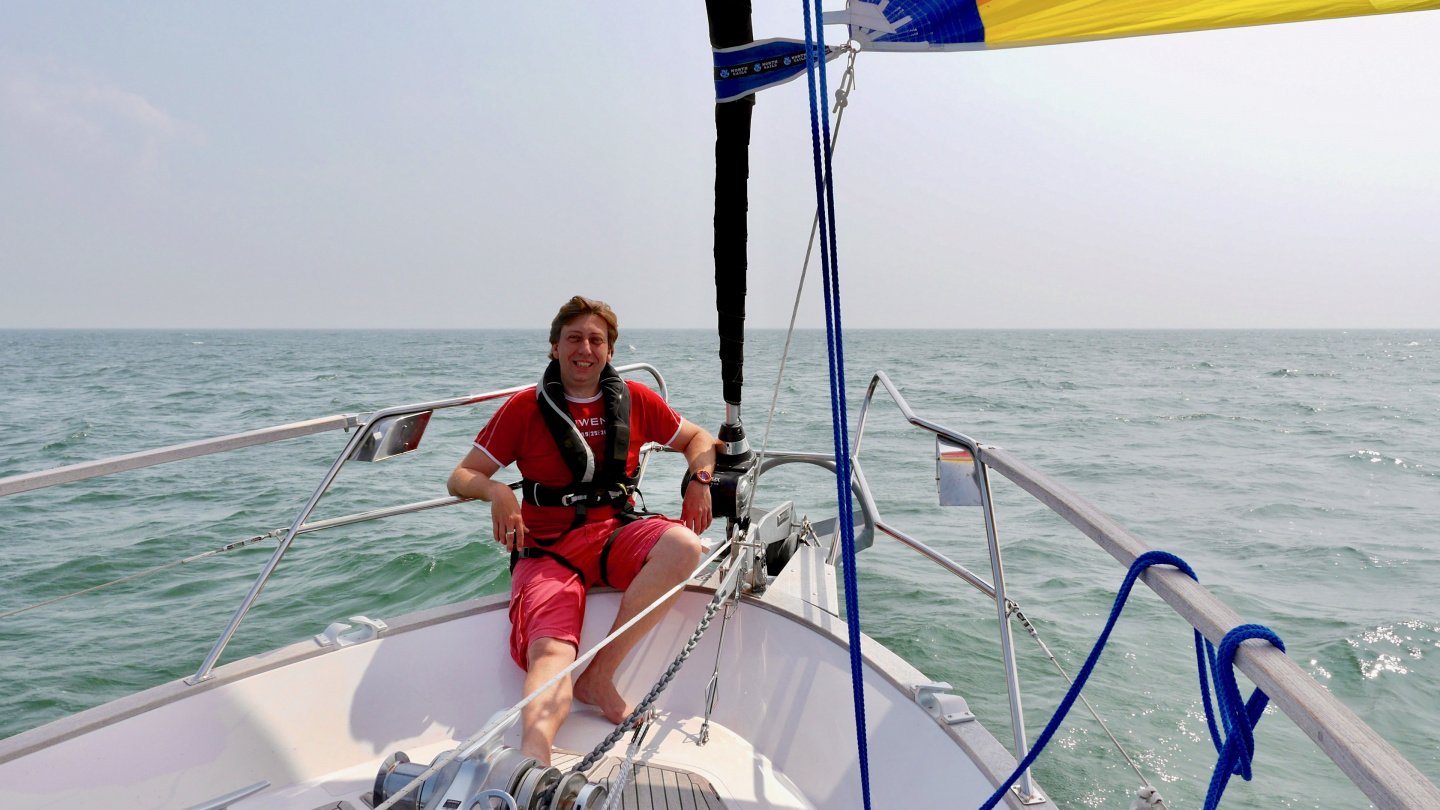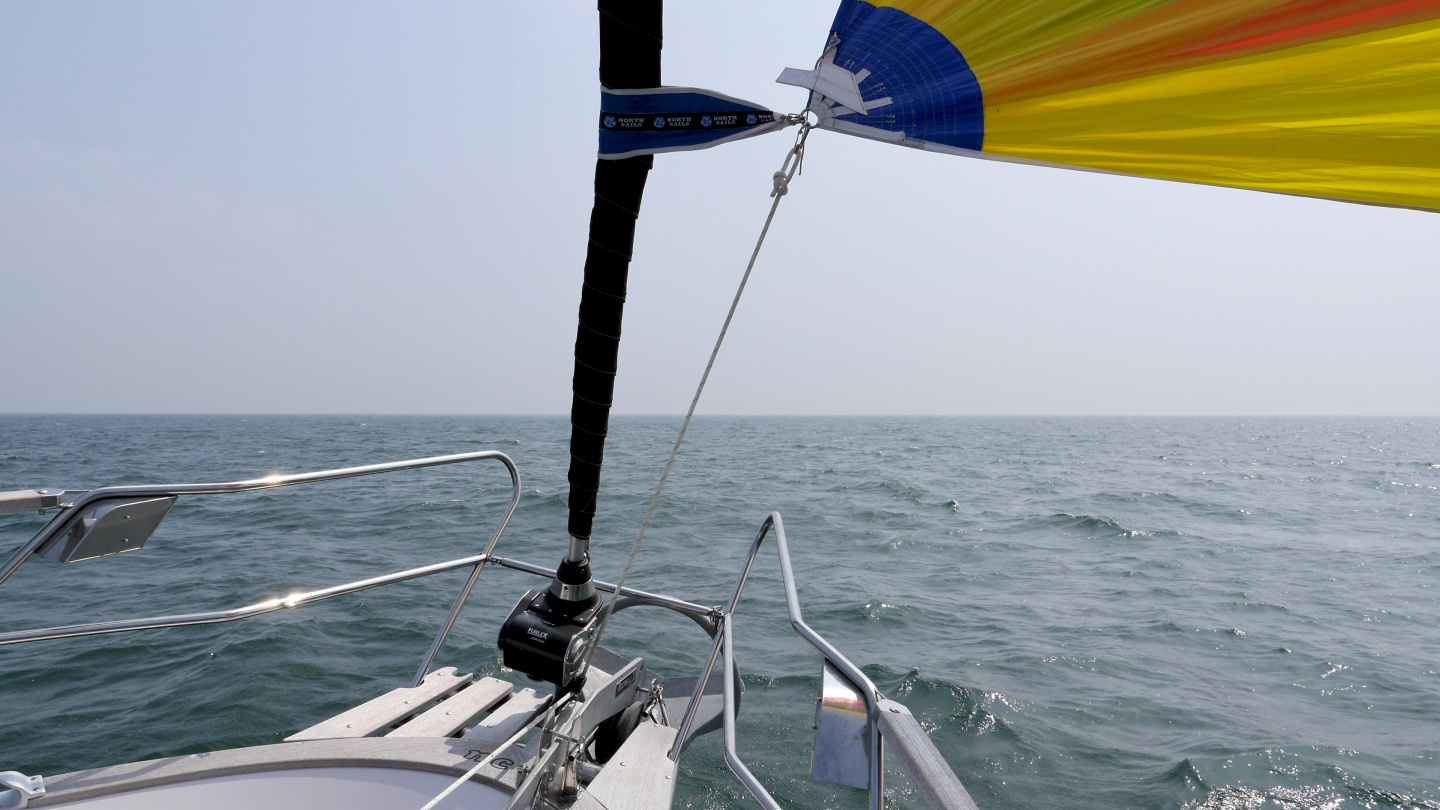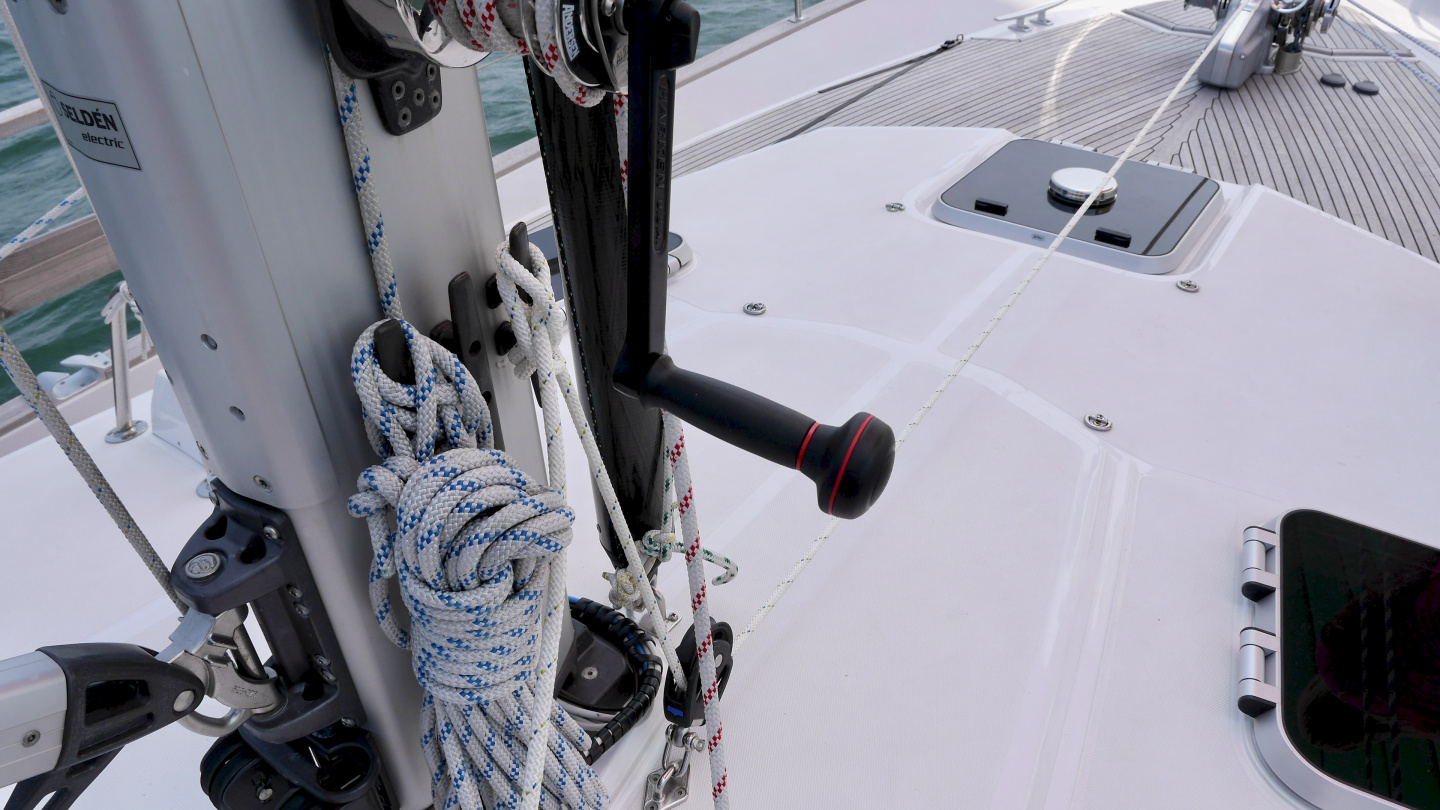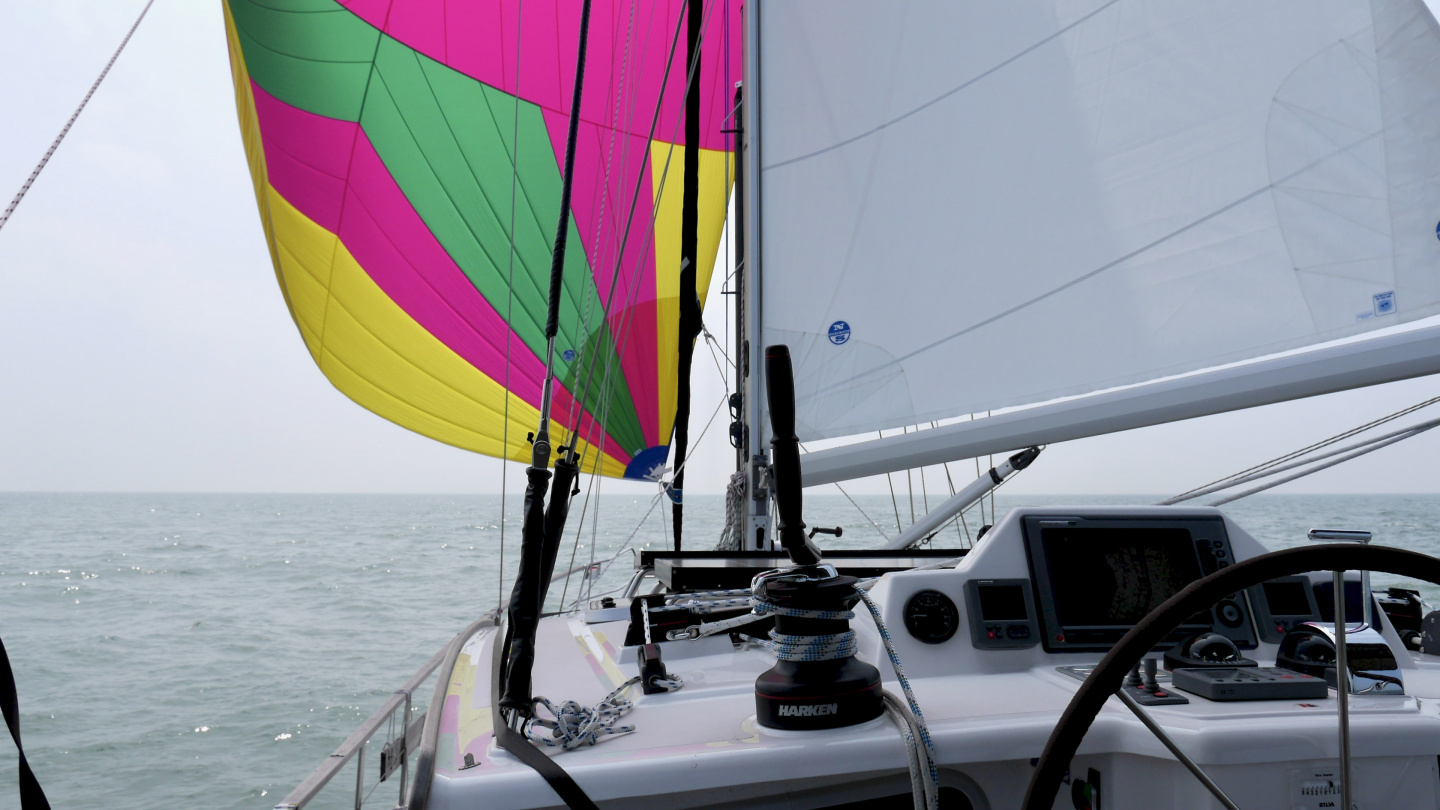The gennaker is definitely our favourite sail. During the sailing in France on the coast of Normandy from Calais to Dieppe we had a perfect gennaker weather for 82 miles.

Onboard Suwena we have a North Sails G3 gennaker with a dousing sock and its area is 114 m2. After Andrus read a good story about trimming gennakers in the Yachting Monthly magazine we decided to tune our gennaker rigging.
Our bowsprit is shorter than usual because of the fixture needed for the Rocna anchor. Last winter a new steel loop was welded to the front of the bowsprit for the gennaker’s tack. The magazine story gave to us an inspiration for trying an adjustable tack line as well. Thus we added a block to the newly welded loop and run the line from the gennaker’s tack to the mast. At the mast the line is run through a foreguy’s block on the deck either to a cleat or a winch.


Before we had a fixed tack line and we had to adjust its length before deploying the gennaker. When the gennaker is flying the pull on a tack line is so strong that opening knots for adjusting the line’s length was not possible.
The adjustable tack line really helps trimming the sail when the wind is shifting. With the new setup we get more performance out from our gennaker. On the leg from Calais to Dieppe the wind was changing all around and we tested various trims when the relative wind angle changed.
When sailing on a beam reach we tightened the tack line. Then the sail’s luff tightened and gennaker’s shape resembled more a genoa. We could sail up to the apparent wind angle of 60 degrees.
When we were running we gave some slack to the tack line and at the same time we eased off a little a halyard and a sheet. The shape of the sail was then more spherical and it resembled more a spinnaker.
During the dead downwind run the gennaker had a tendency to collapse and therefore we deployed a mainsail as well. The mainsail was rigged with preventer to hold it on place. When running wing-on-wing with the gennaker and the mainsail, the gennaker was flying nicely despite of some waves.

When on the other hand it was time for jibing because of the gennaker started to show the signs of collapsing we made an interesting observation. We jibed the mainsail also to the same tack as the gennaker. Irrationally it worked and the gennaker was flying well again without any need of jibing. Maybe the mainsail directed the airflow somehow to the gennaker even if they were both on the same tack. We could sail with “gennaker on a wrong tack” even with the wind angle of 135 degrees.
Now that we have been using the gennaker for multiple times we have developed a good routine for deploying and retrieving it. I’ve found a good way for packing the gennaker snuffer. When Andrus is lowering the sleeve with the halyard I pack the sleeve starting from a few metres above the collar. When the sail is nicely folded into the bag I can finally place the head of the sail together with the tack and the clew to the top of the bag. This way all the corners of the sail are ready for the next usage and deploying the sail is quick.
The sailing is interesting in its own way because by trying new things we can always trim the sails better. Then the conditions change and the trimming has to start all over again. No wonder some say about the sailing that “When you cast off the lines you have already arrived”.


Jessss. . gennakkerin
Jessss. . genakkerin trimmauksesta tuli hyviä vinkkejä. Myötätuulta luvassa meille nyt Mustaltakarilta Ouluun. See you soon !!
Moi Iris ja Rami
Moi Iris ja Rami
Tuli vielä mieleen genaakkerin trimmauksesta, että isopurjeen koolla genaakkeripurjehduksessa tuntui olevan paljon merkitystä. Reivaamalla isopurjetta saimme paremmin genaakkerin täyttymään. Samoin siirtäessä iso ns. väärälle puolelle, oli sen kulma aika pieni. Testaus intoa! Nähdään pian.
T Eve ja Andrus